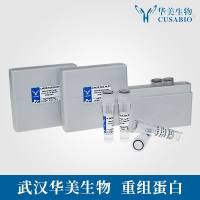Analysis of Coat Protein Expression Cassettes in Protoplasts
互联网
| 1. | The method for isolating plant cells or protoplasts. Methods are now well-established for the isolation of protoplasts from a wide range of plant species (1 ). |
| 2. | Vector requirements or a gene construct that will be expressed in the protoplast under the culture conditions. It is important to use a vector that enables the expression of the insert gene. Genes lacking a plant promoter are expressed using the cauliflower mosaic virus (CaMV) 35S gene promoter. CaMV, one of the best-characterized plant DNA viruses, was used in early plant transformation studies, and the CaMV 35S promoter is recognized in a wide range of plants. For this reason, it is the most commonly used promoter element to express foreign genes during transformation. Gene expression cassettes consist of a multiple cloning site placed between a CaMV 35S promoter, or other strong promoter, and a poly(A) addition site or nopaline synthase (nos) terminator (2 ,3 ). Inserting the gene of interest into the multiple cloning site will drive the expression and allow transient studies. |
| 3. | An efficient method for introducing the nucleic acid into the isolated cells. A number of successful techniques exist in order to transfect nucleic acid into protoplasts, such as polyethylene glycol (PEG) treatment, electroporation, microinjection, and particle bombardment. PEG is a more common choice for protoplast transformation, because it does not require more specialized equipment associated with electroporation or biolistics. The precise function that PEG has during transfection is unknown; however, it is believed that PEG precipitates nucleic acid onto the protoplast plasma membrane and then stimulates its uptake by endocytosis (4 ). |
| 4. | A sensitive method for the detection of gene expression. Detection of gene expression depends on the nature of the insert itself. For example, if a reporter gene has been used in order to study the effects that a viral leader sequence has on gene expression, then the reporter gene product (GUS, CAT, LUC) is easily screened using its appropriate substrate (5 –8 ); or if a gene encoding for a protein to which an antiserum exists, then this antiserum can be used to detect the expression of that protein. |









